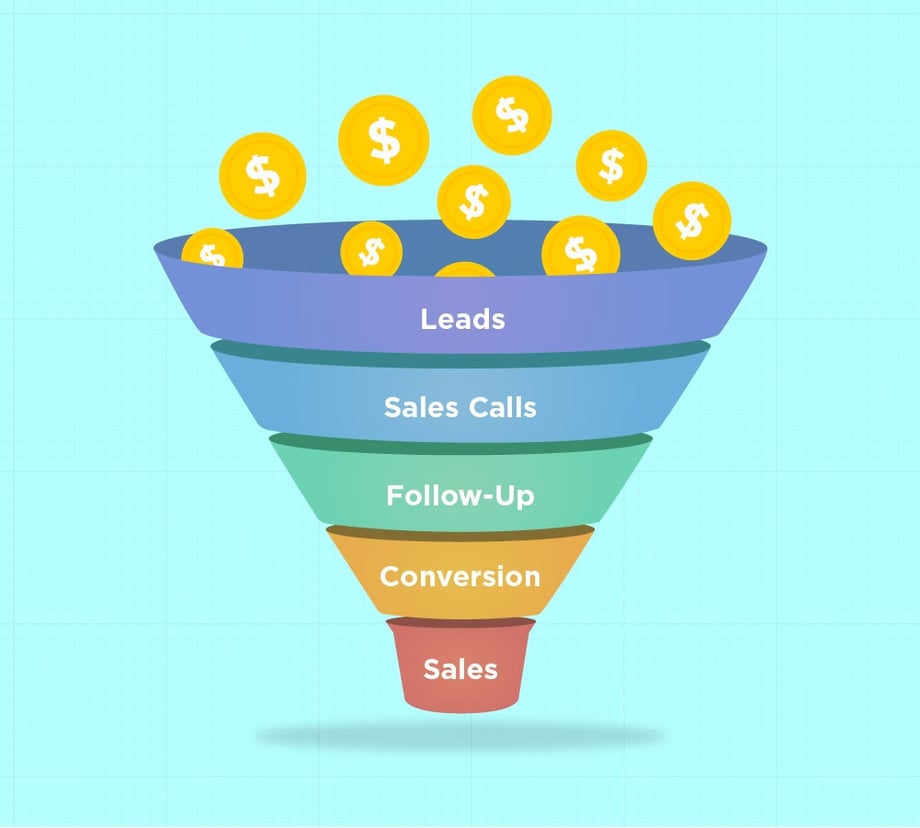Marketing Qualified Leads (MQLs) are those individuals in the middle “consideration” stage of the buyer’s journey, where they are definitely interested, but aren’t quite ready to make a commitment just yet. Individuals classified as an MQL could have downloaded an ebook or whitepaper, or have registered for a Webinar.
Sales Qualified Leads (SQLs) are individuals who are closer to the “decision” stage. These types of leads already been vetted and deemed ready to convert by someone in your sales organization, and are ready for a direct sales reach out or follow up.

It’s important to properly define and differentiate between these two types of leads to make sure that your Sales and Marketing teams are in alignment. There needs to be an appropriate hand-off point where a lead is nurtured from a MQL to an SQL, so the sales team can take over and (hopefully) close the deal.
This percentage of marketing qualified leads that convert to sales qualified leads is known as the MQL to SQL conversion rate, and is a key sales metric in understanding how well your marketing team is stocking the sales pipeline with high quality leads.
Here’s how to calculate the MQL to SQL conversion rate:
# of Sales Qualified Leads / # of Marketing Qualified Leads
= MQL to SQL Conversion Rate %
So now that you know how to calculate the conversion rate, let’s talk about the actual conversion process. This can be the tough part, as you have two separate teams trying to work with a lead using two (or more) different methods. The best place to start is usually by implementing a lead scoring system, which is a process of assigning values to each lead that comes in, scoring them against specific criteria so they can be properly engaged by the marketing and sales teams as they move through the process.
In addition, there are some characteristics that are common in each type of lead as they move through the qualification and conversion process. Here’s a typical summary:
Visitor → Lead
Who are they?: Someone casually visiting your website or blog to consume content, but haven’t necessarily expressed interest in your specific products and/or services
What are they doing?: They’re interested in your content for the purposes of entertainment, education or curiosity
What do they need?: At this time, you don’t have any information other than that they want to consume free and relevant content
How can you nurture them?: Drive them towards content-related CTAs such as Newsletter Sign-ups, or landing pages that will give them high-value free content in exchange for personal contact information
Lead → MQL
Who are they?: Someone who has submitted basic contact information in exchange for gated content
What are they doing?: They’re interested in higher-value, targeted content, such as downloadable whitepapers, ebooks, templates, checklists, etc.
What do they need?: By being willing to submit personal information in exchange for gated content means that content is highly relevant to them, and may address a pain point or specific inquiry they may have
How can you nurture them?: Using marketing automation, add them to an email workflow that will deliver additional gated content, invites to webinars, or demo sessions that are highly relevant to their expressed interest and needs.
MQL → SQL
Who are they?: Someone who has downloaded gated content or attended a webinar, and may still be visiting your website or engaging with other posted content
What are they doing?: Through engaging with gated content or attending a webinar or event, this MQL has shown interest in your products and/or services
What do they need?: This MQL has confirmed that they have a problem or issue that your products and/or services can provide a solution to
How can you nurture them?: Continue to nurture the MQL with valuable and branded content to help them further determine if your offerings are a good fit for what they need
SQL → Sales Conversion
Who are they?: Someone who your Marketing team has vetted against their pre-determined buyer personas and have deemed as “ready to convert”
What are they doing?: This SQL has inquired further about your specific products and/or services and has confirmed that they want to be contacted by your sales team
What do they need?: This SQL has identified their need(s) and are weighing your offerings in comparison to competitors. They require specific information and incentives to drive them towards a sales decision.
How can you nurture them?: Provide the SQL with individualized attention such as live demos, free trial period access, discounts, or limited time offers to help encourage their purchase decision.
As you can see throughout the stages detailed above, the most important part of the lead conversion process is delivering relevant information and support to your potential customers when they are most open to converting (from one stage to the next). As mentioned above, implementing a lead scoring process will help you to define users in each of these stages, so you are adding them to workflows and reaching out only when they need it — otherwise you run the risk of inundating them with content they are not yet ready for.
Your goal at the end of the lead qualification cycle is to maximize your MQL to SQL conversion rate, and ultimately the rate at which those SQLs convert to paying customers.


